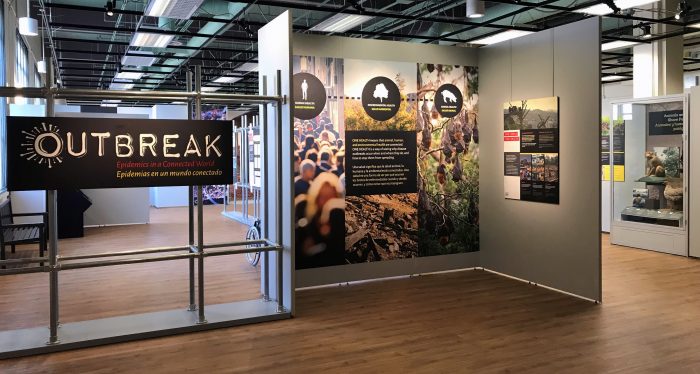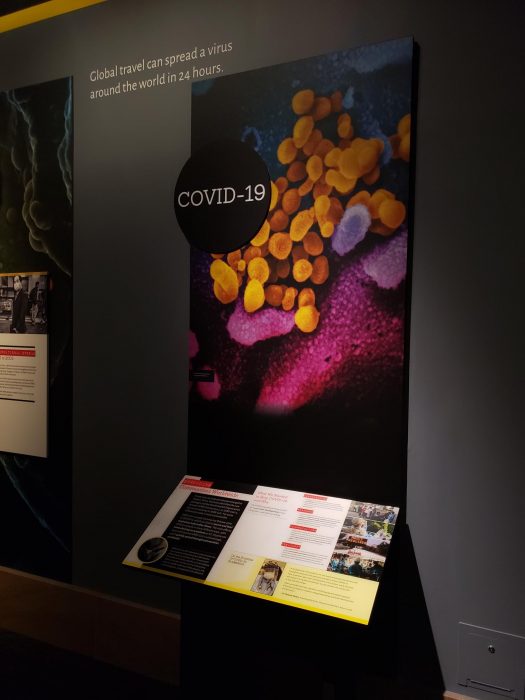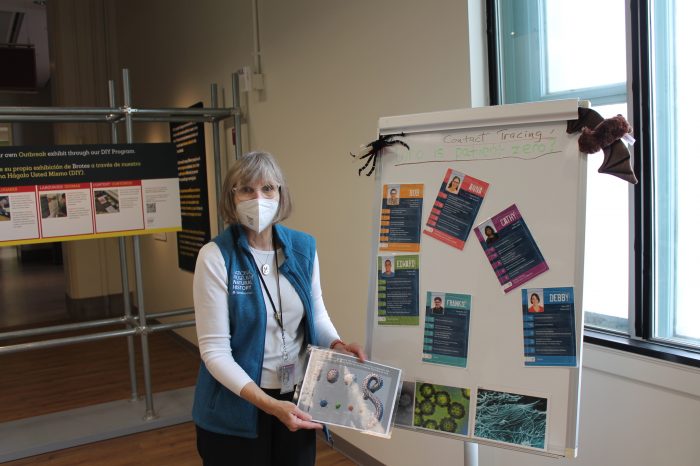Outbreak: Epidemics in a Connected World closes this weekend
The National Museum of Natural History’s Outbreak: Epidemics in a Connected World exhibit, one of the Smithsonian’s most (unintentionally) timely exhibits, will close this weekend. Make sure to stop by NMNH on or before Sunday, June 4, so that you don’t miss it. The Outbreak exhibit first opened at NMNH in May of 2018, a century after the 1918 Influenza pandemic and less than two years before the Smithsonian (and most of the country) was shuttered due to the COVID-19 global pandemic.

Visitors’ feelings and thoughts about the Outbreak exhibit were markedly different in 2021 from when it opened in 2018. In the time it was closed, visitors learned first-hand what it was like to live through a pandemic, and saw what efforts were taken to try to curb the spread of COVID-19. Questions in the exhibit went from being about the difference between an epidemic and a pandemic, to questions about finding patient zero and vaccination mandates. NMNH itself hosted a vaccination clinic for Federal employees in April 2021, proving that pandemics weren’t relegated to the history books.

Since its opening, Outbreak’s main message to visitors has been about “One Health,” the concept that human health, animal health and environmental health are closely connected. It has highlighted this concept by examining case studies of different infectious diseases and their effects on individuals and communities in the 21st century. From HIV/AIDS, to Ebola, to Influenza, to Zika, and even to a newly created panel on COVID-19 when NMNH reopened in 2021, the exhibit sought to teach visitors where these diseases come from, how viruses can “spill over” from animals to people, how quickly they can spread, and most importantly, what we can all do to help try to prevent the next outbreak.

The full exhibit closed in September 2022 to make way for the Lights Out: Recovering Our Night Sky exhibit, but because the exhibit’s message couldn’t be more important, another version using the museum’s Outbreak Do-It-Yourself Exhibit offering reopened in November 2022 close to the exhibit’s original space on the museum’s second floor.

Countless visitors, an estimated 3.4 million, have gone through the exhibit and learned what they can do to protect themselves and others. Since Outbreak opened in 2018, almost 100 volunteers have volunteered in the Outbreak spaces. In that time, they volunteered for almost 7,000 hours and interacted with over 67,000 visitors throughout the exhibit and at the educational carts. While the global health emergency for COVID-19 has ended, it doesn’t mean that COVID-19 is no longer a threat, or that another virus won’t surge on a global scale. Don’t miss your chance to check out Outbreak before it closes!
Michele Gelhausen is a volunteer engagement specialist with the Office of Visitor Services and Volunteer Managment. She also is a contributing editor overseeing Volunteer Voices for the Torch.
Posted: 1 June 2023
-
Categories:
Education, Access & Outreach , Natural History Museum , Science and Nature , Volunteer Voices








